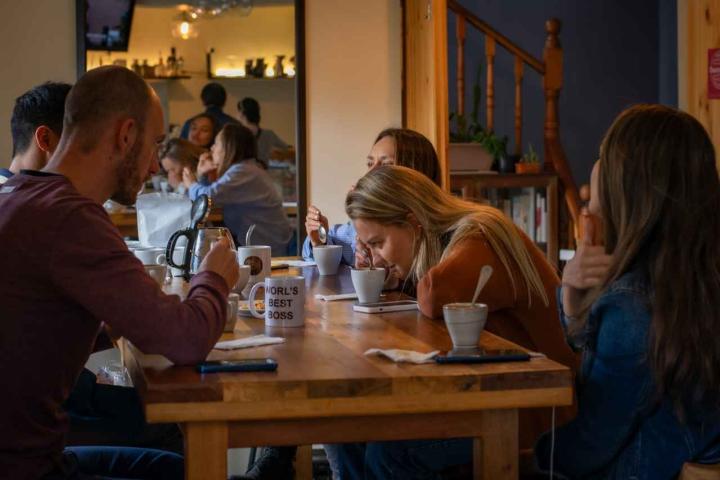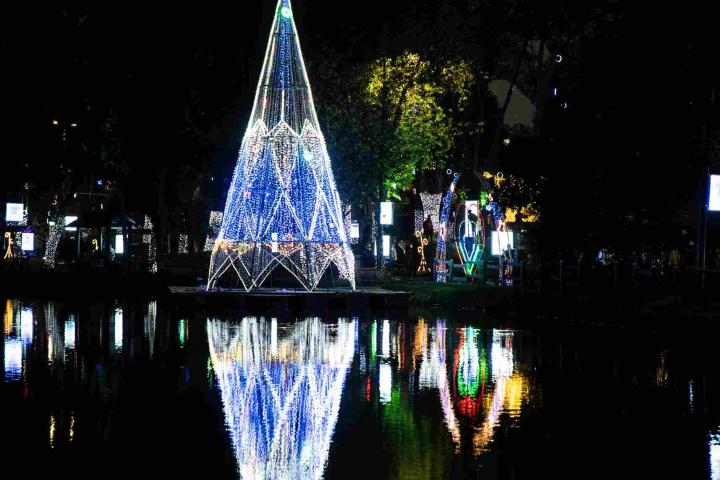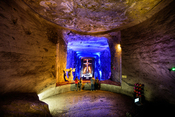A must-stop during your visit to Bogota is the "Graffiti District." Here, urban art is the main protagonist, expressed through lines and murals in public spaces. A burst of color and shapes takes over the city, and the walls become canvases filled with life.
Through the establishment of the “Graffiti District,” the idea is to change perceptions that associate urban art with vandalism since it has been demonstrated that these manifestations transform certain social realities through color, creativity, and talento. The Urban Art shows tolerance, respect for diversity, love for the city, and inclusion based on free expression.
Urban artists have transformed Bogotá completely. They have turned some risky and vulnerable areas of the city, considered banned for locals and visitors and gloomy or irrelevant, into areas full of color, animals such as birds, tigers, fish, giant flowers, smiling human faces, and, above all, history.
The Bogotá Mayor's Office, together with the Graffiti District, has created 334 new “paintings” throughout the capital city, making corridors full of color and life. In addition, there are also educational tours that have a great reception and guide the responsible practice of urban art.
Where and how to see them?
Graffiti was once a taboo subject, but today, it's an opportunity to attract visitors and artists from different corners of the world. Are you interested in spending a day admiring artworks in the streets and discovering new places? We introduce you to the "Graffiti District" and six other options to appreciate the city's urban art..
- Graffiti District: Influenced by international artists, the Graffiti District is located in the Puente Aranda locality between the central-east and south-west of Bogotá. Its importance lies in its reputation as one of the most extensive graffiti galleries in Latin America. Here, you will find numerous murals with different concepts painted on the facades of large factories.
To reach this area, take a bus from any TransMilenio station to the "Distrito Graffiti" Station. Then, go down Americas Avenue for two blocks, ending at Carrera 50.
- La Candelaria, the urban art epicenter
As one of the busiest areas for national and international visitors, La Candelaría not only tells the history of Bogota, but its walls are also canvas used by hundreds of Colombian and international artists who decided to capture their creations on the walls. Among the dozens of paintings that you can see throughout the sector, the most outstanding are the images alluding to the Colombian indigenous tribes.
To enjoy the whole route, you can get to the center of the city by TransMilenio or public transportation. You should get off at Calle 4 and start the tour at the Universidad de la Salle. Once there, you walk all along Carrera 2a and its surroundings until you reach La Concordia School. This road will take you to the picturesque and bohemian Chorro de Quevedo, a place that gathers foreign and national visitors.
- Avenida El Dorado, a social view
It is also known as Calle 26, and it is another of the ideal graffiti tours in Bogotá. This area differs from others because its designs convey social messages, and several murals tell events that have marked Colombia's political, social, diverse, and cultural history.
If you want to get a complete panoramic view, you can go from Carrera 30 and Avenida El Dorado, and from there, continue straight along this road until you reach the Eastern Hills.
You can take TransMilenio to the Ciudad Universitaria - Lotería de Bogotá station and start the tour there.
5. Santa Fe, a renewing territory
Certainly, the Santa Fe locality, in the center of the city, has been one of the areas with the greatest resignification in Bogotá. This place has one of the urban art blocks that is worth visiting for its picturesque works on houses and low-rise buildings, mainly of them with a colonial style.
At that time, the goal was to transform the image of the locality through creativity and expression. Its route is along Calle 24, behind the Central Cemetery, and up to La Candelaria.
You can take TransMilenio to the Centro de Memoria Histórica Station and start the tour there, or you can take a cab or a private vehicle.
6. Avenida Boyacá’s colors
Another artistic concept in the capital city is related to historical memory. One of the places with the most considerable amount of this kind of graffiti is the bridge at Calle 116 and Avenida Boyacá, known by artists as Diego Felipe Becerra. He was a young urban artist from the capital who died in unfortunate circumstances and to whom they paid tribute in this place.
Here, the community of urban artists remembers Diego Felipe through the creation of different murals and, at the same time, changes the negative image of those who dedicate their lives to urban art in Bogotá. Please remember to use the pedestrian bridge to have a better panoramic view of the area and several of his works.
You can take the TM bus or SITP to Boyacá Avenue, south-north direction, and get off at Calle 116.
7. Avenida Jiménez, the urban art summary
Due to its cultural significance, another outstanding point of urban art in the city is between Carrera 10 and Caracas Avenue. This tour is best explored on foot, starting from the west towards the Eastern Hills.
If you look toward the buildings, you will notice several artworks representing our identity: from Gabriel García Márquez, indigenous communities, and even pieces from the pre-Columbian era.
You can take the TransMilenio to the Avenida Jiménez Station.











